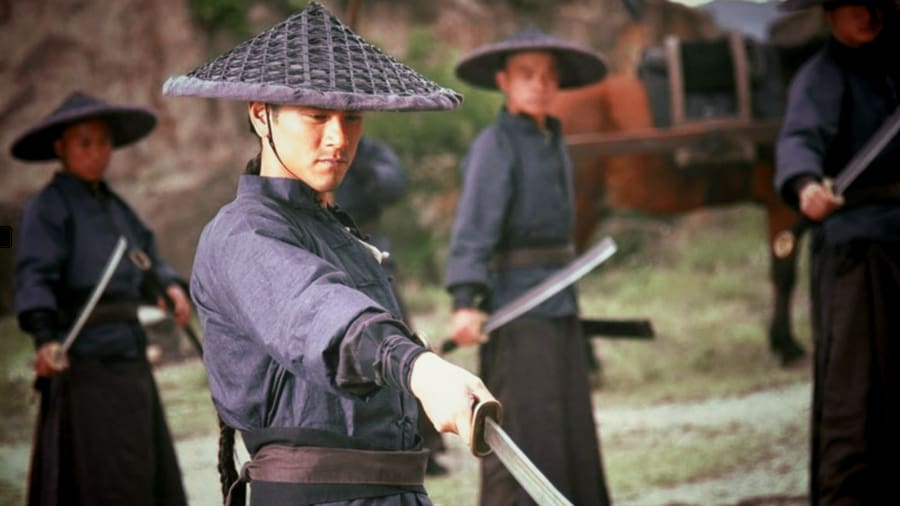
In ancient China, the term bo biao 保鏢 refers to bodyguards who played a crucial role in ensuring the safety of individuals, especially those of high status. Their duties extended beyond mere protection; they were also involved in escorting officials, merchants, and aristocrats during travel, guarding valuable cargo, and maintaining order in public spaces.
The concept of bodyguards in China can be traced back to ancient times. However, it was during the Qing dynasty 清朝 that the role of bo biao 保鏢 became more formalised and recognisable. The Qing 清, being a foreign dynasty established by the Manchus, placed significant emphasis on maintaining stability and order. As such, the protection of key figures was paramount.
In a society characterised by political intrigue, corruption, and violence, the presence of bo biao 保鏢 became increasingly vital. They were often employed by wealthy merchants, government officials, and even local gentry to deter banditry and ensure safe passage through treacherous territories.
The responsibilities of bo biao 保鏢 were diverse and multifaceted. The primary duty of bo biao 保鏢 was to protect their clients from physical harm. This included defending against attacks from rival factions, thieves, or disgruntled members of society. Bo biao 保鏢 provided escort services for merchants and officials during travels, ensuring their safety on dangerous routes, particularly in regions known for bandit activity. In addition to personal protection, bo biao 保鏢 were tasked with maintaining order in public spaces, such as markets or during festivals. They would intervene in disputes and ensure that gatherings remained peaceful. Bo biao 保鏢 often acted as the ‘eyes and ears’ for their clients, gathering intelligence on potential threats or rival activities in the area. Their intimate knowledge of the local landscape allowed them to identify dangers before they materialised. In the event of an attack or ambush, bo biao 保鏢 were trained to respond swiftly, employing tactics that might include counter-attacks, escape routes, or even negotiations with assailants.
Bo biao 保鏢 were always well-versed in various martial arts skills, allowing them to defend against attackers and engage in combat when necessary. They were trained in the use of weapons, including swords, pole weapons, daggers, hand thrown projectiles and many more. It is important to understand that bo biao 保鏢 defended against, and fought with, very dangerous people armed with nasty weapons and brutal strategies. Bodyguards 保鏢 had a short life expectancy. It was the civil equivalent to the military.
Stealth was a critical skill for bodyguards, particularly when conducting reconnaissance missions or when a stealthy approach was necessary to avoid detection by enemies. Knowledge of terrain, escape routes, and survival skills were essential for navigating dangerous environments and ensuring their clients’ safety.
The Qing dynasty 清朝 saw the bo biao 保鏢 profession evolve significantly. The growing influence of trade and commerce during this period created a demand for professional bodyguards. Wealthy merchants, seeking to protect their interests, began hiring bo biao 保鏢 in greater numbers. Additionally, the Qing government began to recognise the importance of personal protection for officials, leading to the establishment of formal bodyguard units within the military. These units were tasked with providing security to high-ranking officials, particularly during the tumultuous times of the late Qing dynasty 清朝, marked by internal strife and foreign invasions.
The role of bo biao 保鏢 in Chinese society transcended mere protection; they became symbolic of power and status. The presence of bodyguards indicated wealth and influence, with many affluent individuals employing multiple bo biao 保鏢 to showcase their standing – not a big cultural difference to their ancient counterparts, the ‘retainers’. (shíkè 食客 or ménkè 門客 etc.)
In literature and folklore, bo biao 保鏢 are often portrayed as loyal and courageous figures, embodying the virtues of bravery and fidelity. Their stories have been immortalised in various narratives, further enhancing their cultural significance.
Reference:
-
Esherick, Joseph W. The Origins of the Boxer Uprising. University of California Press, 1987.
- Provides context about security, martial arts, and protection services in Chinese society, especially in relation to the Boxer Rebellion.
-
Henning, Stanley E. “Academia Encounters the Chinese Martial Arts.” China Review International, 1999.
- Offers insights into the history of martial arts and its connection to the bodyguard industry.
-
Lorge, Peter A. Chinese Martial Arts: From Antiquity to the Twenty-First Century. Cambridge University Press, 2012.
- Discusses the development of martial traditions in China, which includes the role of bodyguards and escort services in society.
-
Shahar, Meir. The Shaolin Monastery: History, Religion, and the Chinese Martial Arts. University of Hawaii Press, 2008.
- Looks at the intersection of martial arts and the broader social role played by individuals skilled in combat, including their participation in protection services.
-
Liu, Zhiwei. The Business of Escort Agencies in Old Beijing.
- Specific historical texts and articles, often available only in Chinese, examine the regional specifics of escort agencies, like those in Beijing’s Dashilan area.
